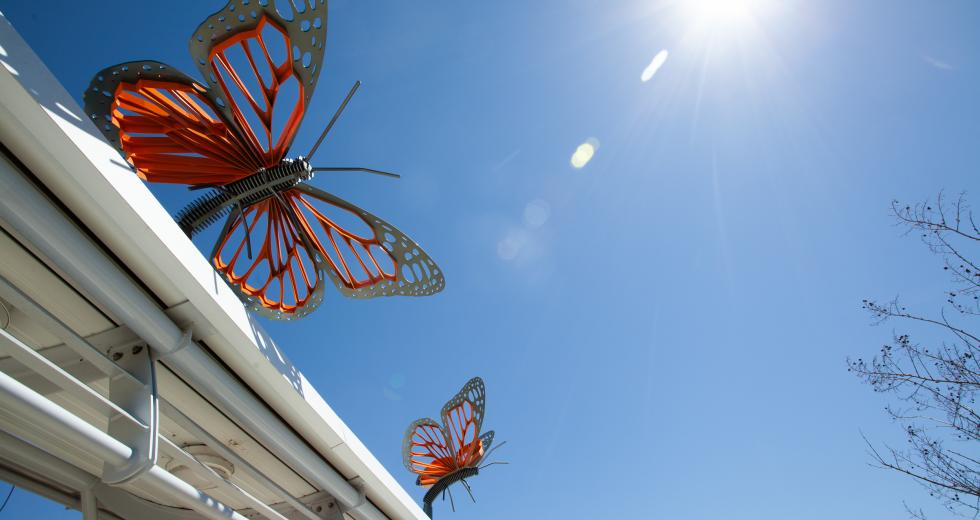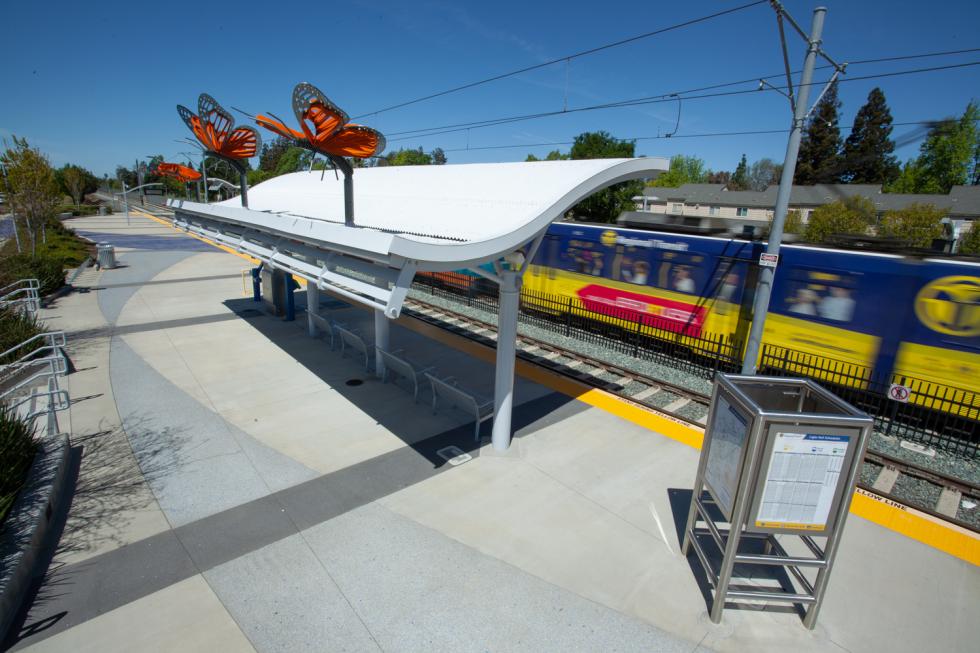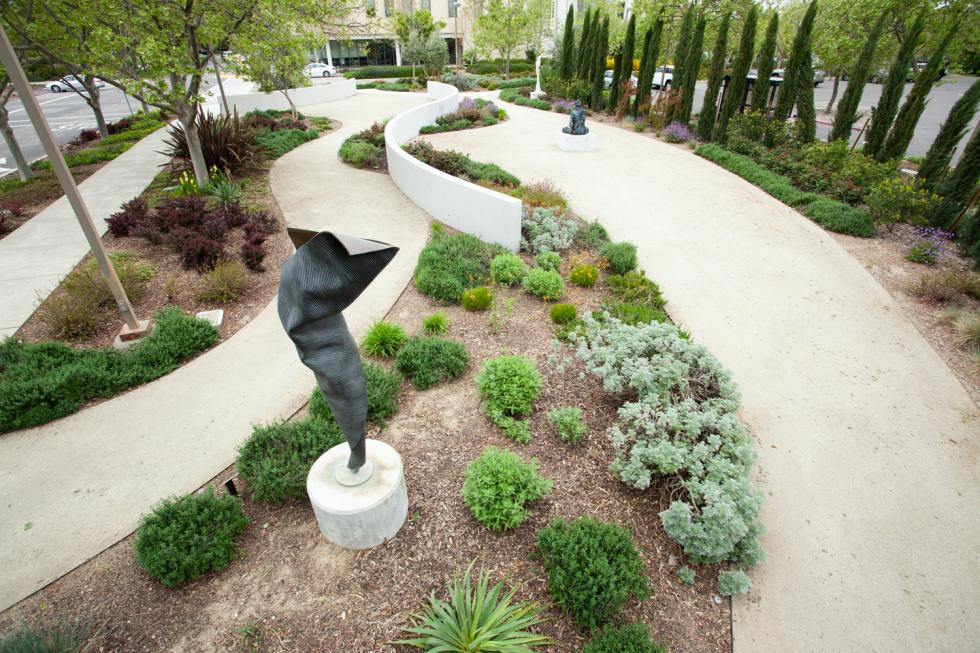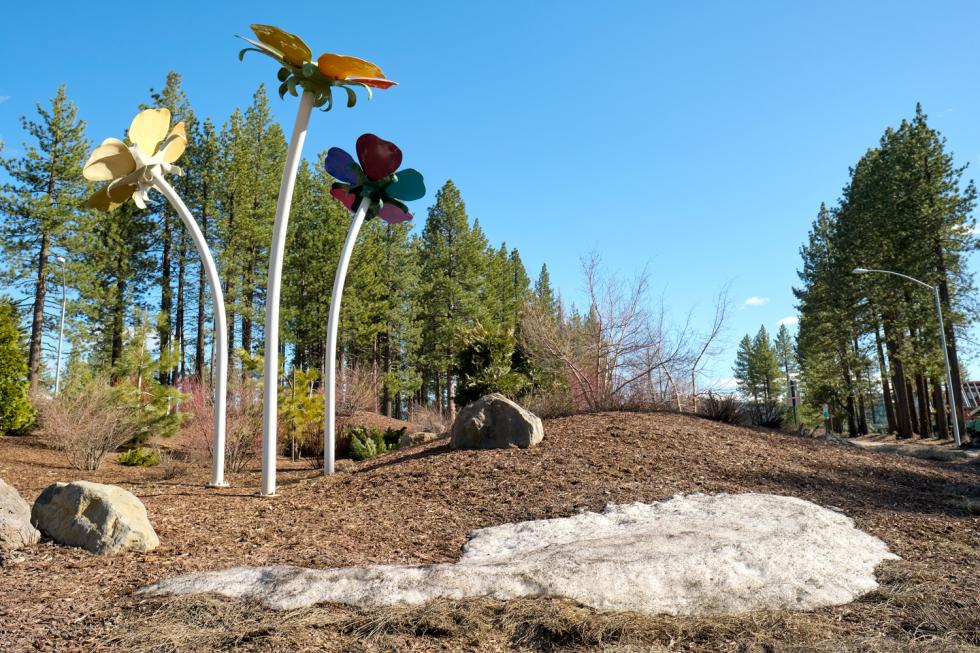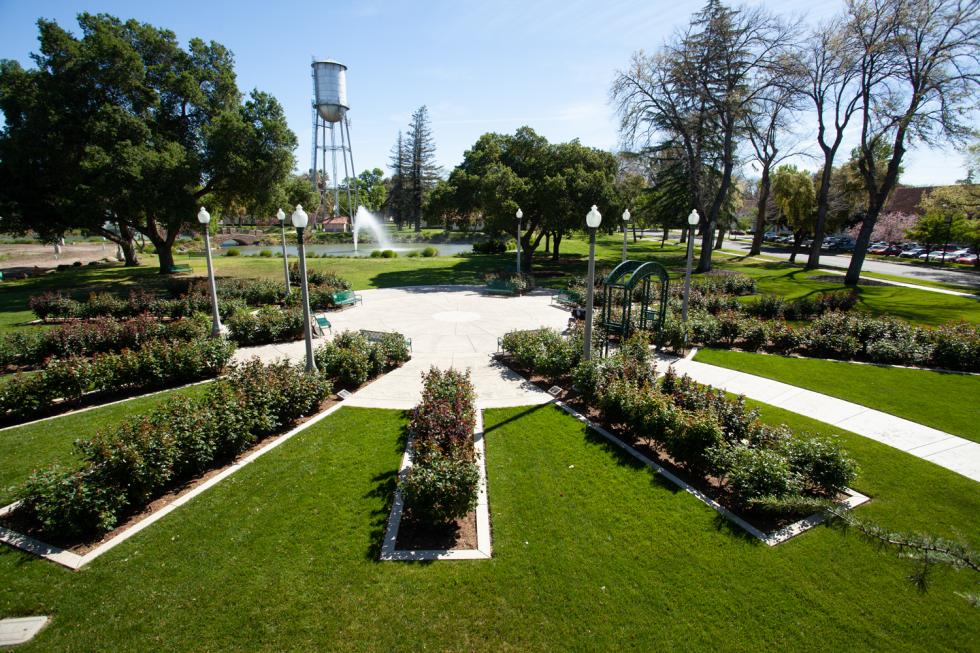Public art has always had a place in the designed environment, but art in landscape is becoming more common in the public sphere. According to the Getty Conservation Institute, landscape architects are increasingly collaborating with creative entities to craft landscapes that express an artistic vision. Here we feature notable spaces in the Capital Region that celebrate beauty through landscape architecture and artistic design.
SUBTILE
West Sacramento / Landscape Architect: Quadriga
In May 2015, West Sacramento released a heavily publicized request for proposal for a public art installation at the city’s River Walk Park. The city was looking to animate the landscape in a way that would reflect the historical, cultural and geographic character of the site through art and landscape. After receiving more than 100 proposals from artists around the world, the panelists selected “Subtile,” a submission from internationally renowned Czech-Argentinian artist Federico Diaz. A very kinetic piece, “Subtile” is meant to suggest a grove of trees whose more than 17,000 reflective stainless-steel disks are in constant motion with the breeze and echo the changing colors and visual patterns of the clouds, river and surrounding cottonwoods. The artist used a mathematical algorithm to determine the shape and silhouette of the sculpture’s form.
Photo: Mike Graff
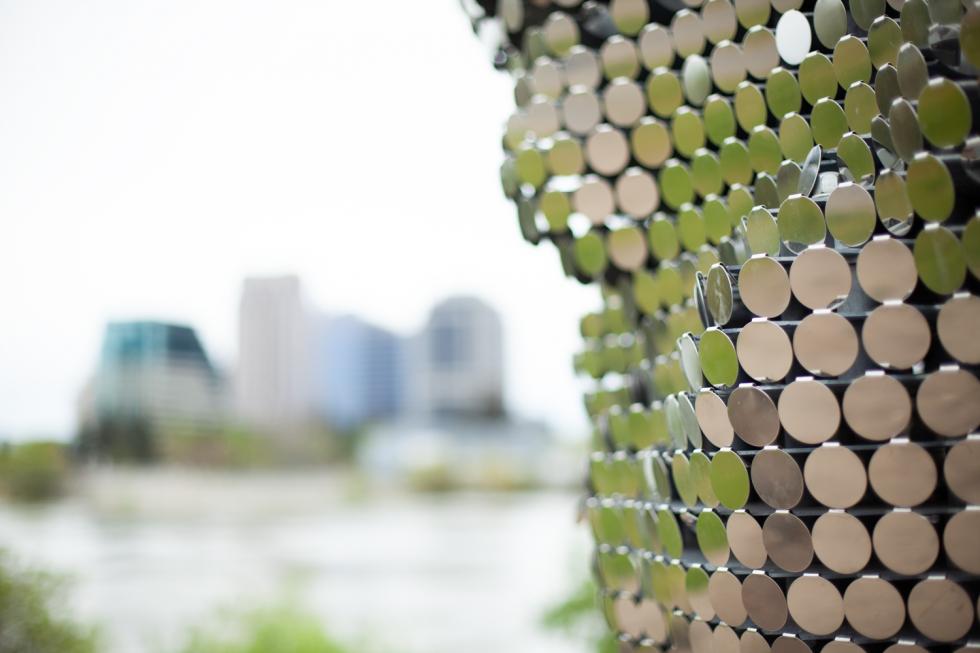
Because the sculpture is on a protected levee, permits were required from the Central Valley Flood Control Board, the City of West Sacramento, the U.S. Army Corps of Engineers and the California Department of Fish and Wildlife. To gain the necessary approvals, the landscape architects provided detailed descriptions of the design, light patterns and improvements and how those might affect potential wildlife species, which added another layer of complexity to the design solutions. Two spotlights that illuminate the piece (but don’t conflict with existing light poles) were added. Native shrubs and bunch grasses were planted and the entire disturbed area was covered with hydroseeding to restore the site to its original condition. While the sculpture is two separate pieces, it appears to have a grove-like appearance. “It was never meant to be a super physical description of nature,” says Suesens. “Rather than mimicking nature, the artist described it as echoing nature.”
SACRAMENTO REGIONAL TRANSIT DISTRICT SOUTHLINE
STATIONS
Sacramento / Landscape Architect: The HLA Group
In business for almost 40 years, The HLA Group of Sacramento is no stranger to transportation projects and boasts a strong portfolio in urban design applications. Notable projects include the Sacramento Greyhound Bus Terminal, which earned a LEED Silver rating; the historic Robert J. Cabral station at Stockton’s Altamont Commuter Express; and light-rail stations at Florin and Fruitridge roads. Through a public bid process, HLA also won site design services for three intermodal facilities for Sacramento Regional Transit District’s light-rail extension in south Sacramento. Extensive community input was sought before HLA arrived at its final plan, a single design aesthetic that blended landscape and art for each of the stations.
Photo: Mike Graff
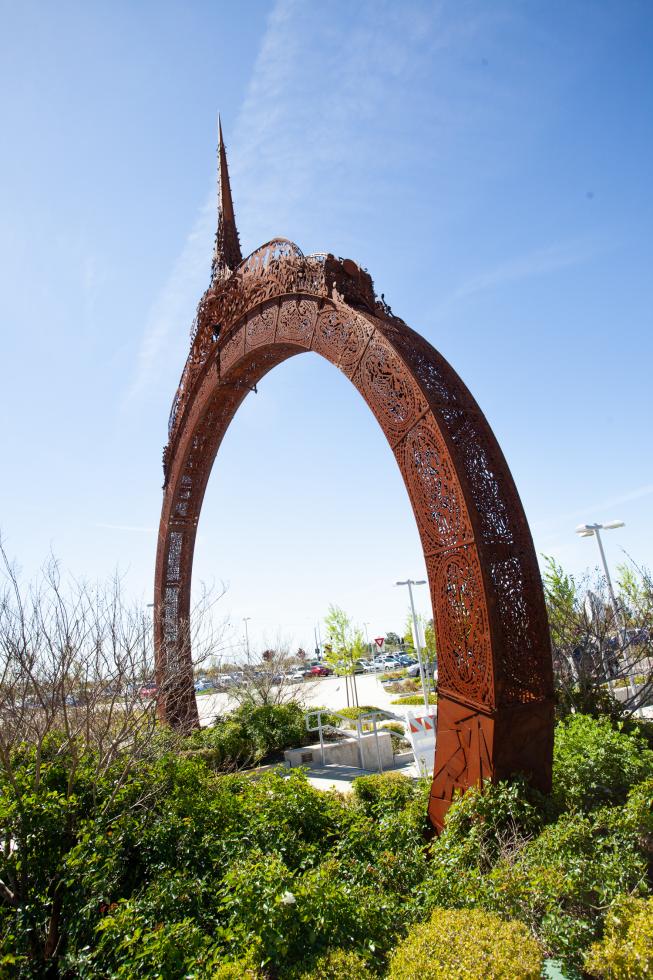
Landmark artwork was incorporated into the site design as part of the city of Sacramento’s Art in Public Places program, in coordination with the Sacramento Metropolitan Arts Commission. The APP program specifies that 2 percent of eligible Sacramento City and County capital improvement project budgets be set aside for the commission, purchase and installation of artworks. The HLA Group reviewed art submissions for pieces that would blend with the overall design and recommended the siting locations.
Center Station, above left, incorporates three freestanding monarch butterflies mounted on steel supports on the edge of the station’s shade structure. The artwork was created by Bay Area artist Joyce Hsu, who titled the work “Migration,” based on the movement and migration of the monarchs through the Sacramento region. A 24-foot by 20-foot steel archway by renowned American sculptor David Best serves as an architectural gateway to Franklin Station, above. The piece weighs approximately 11,000 pounds. The Center and Franklin station projects were completed in the spring of 2016. The partially-built third station, Morrison Creek, is expected to come online in the next two years.
MARGRIT MONDAVI ART GARDEN
UC Davis, Davis / Landscape Architect: Quadriga
In celebration of the late Margrit Mondavi’s 90th birthday, UC Davis commissioned a garden and sculpture park in 2016 adjacent to the Jan Shrem and Maria Manetti Shrem Museum of Art. The former parking lot was transformed into a garden with curated artworks and a mosaic of diverse and colorful flower beds that reflect Mondavi’s love of color and mimic some of her personal floral paintings.
Photo: Mike Graff
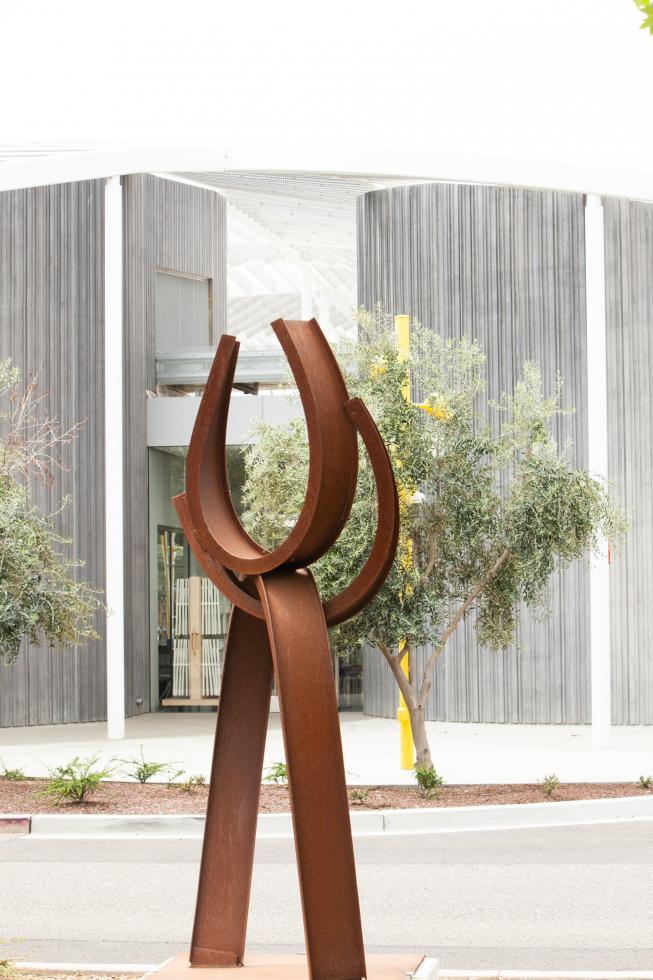
The designers had to create unique places and footings for five sculpture pieces donated by Mondavi’s friends and admirers. They also designed a pathway, using a low wall system and decomposed granite, to naturally move guests around the artworks and through the gardens. One of the art pieces, a modern steel sculpture by artist Jean-Pierre Rives, can be seen from the terminus of the museum hallway. The intention is to draw guests toward the garden. “The spirit and the collaboration and the focus from the top levels of design on campus to the contractors who were building the project was very, very interactive,” says Truscott. “In my almost 35-year career, it is the most amazing project I’ve ever worked on.”
PIONEER TRAIL/DONNER PASS ROAD ROUNDABOUT
Truckee / Landscape Architect: High West (formerly L+P Design
Works)
According to Dan Wilkins, Truckee’s director of public works, roundabouts are not only efficient, they provide a calming aesthetic feature that is preferred over traffic signals. The traffic circles also offer an opportunity to make a statement with landscaping and art.
Veteran landscape architect John Pruyn with High West Landscape Architects has worked on a number of roundabouts in the North Tahoe region, including at the entrance to the Northstar recreation area and at the busy intersections of Highway 89 and Interstate 80 and Pioneer Trail and Donner Pass Road. For the Pioneer Trail/Donner Pass project, Pruyn teamed with Eastern Sierra Engineering of Reno. One of the biggest challenges they faced was to manage the site’s stormwater runoff. Pruyn and ESE designed a low-impact development system utilizing weirs (low dams) and swales (ditches) on the sides of the road, which allowed the water to permeate into the surrounding soil instead of running downstream.
Photo: Fred Greaves
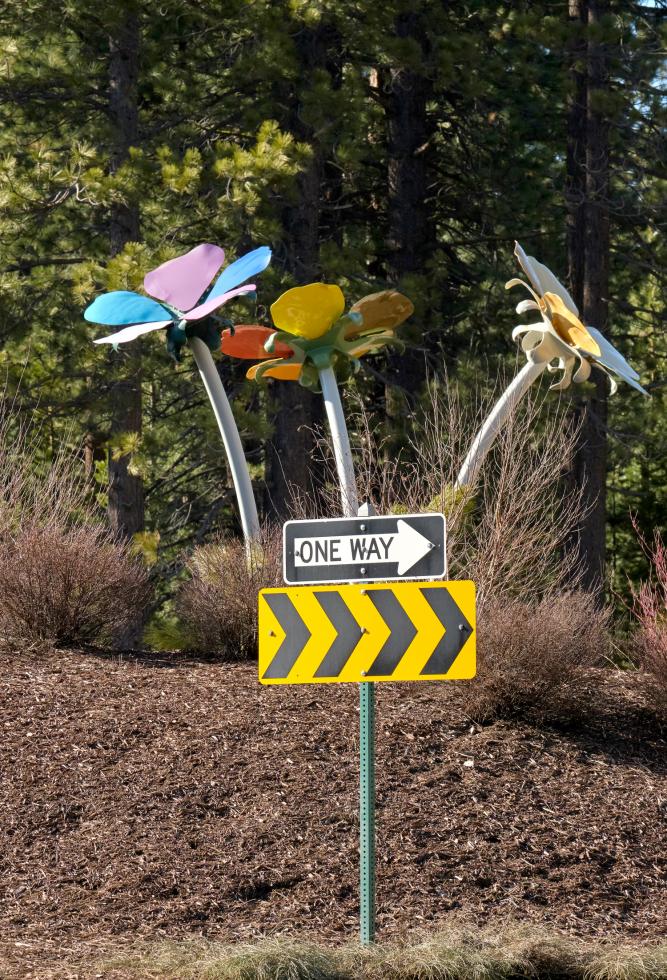
High West also was responsible for the plantings within the paved area of the roundabout, as well as the periphery areas leading in and out of it. Native grasses and forbs were used to help stabilize the soils, and perennials were planted for color and ornamental beauty. Mounding was added on the center circle to accommodate a piece of art designed and donated by local artist Troy Corliss.
The artwork, titled “Mountain Flowers,” includes three 14-foot powder-coated steel flower sculptures. The giant pieces add a whimsical element to the roundabout, which serves as an entry point to the town. “We have so many wonderful local artists here,” Pruyn says. “They’re looking to display their work, and the town is looking to incorporate it.” Truckee also is developing a Public Art Master Plan with support from community stakeholders and the Truckee Arts Alliance, which will consist of policies and programs that guide the installation and funding of public art projects in Truckee. The Pioneer Trail/Donner Pass project was awarded in 2009 and completed in 2010.
UNIVERSITY PARK INTERNATIONAL WORLD PEACE ROSE
GARDEN
Stockton / Landscape Architect: Jeffrey Gamboni, Designer: TJ
David
The 102-acre University Park in the historic Magnolia District of Stockton was designed by developer Grupe Commercial Company to project a message of hope and peace. Tenants include the Health Careers Academy High School, Dignity Health, Wellness Works and the satellite campus for Stanislaus State.
“About six or seven years ago, we were looking to build a permanent art installation that would be a place of beauty and healing and would bring the community together,” says Grupe director Sandy Huber. While in Sacramento for a meeting, Huber found her inspiration: The State Capitol rose garden was in full bloom and messages of peace written by schoolchildren were scattered throughout. She was moved by the beauty of the place and what the children wanted for their families and their world.
Photo: Mike Graff

Both gardens share a theme of peace through nonviolence. In the Stockton garden, 240 roses are planted in a sun-shaped design with the peace plaza at the center and rows of roses jutting out from the core like rays of sunshine; smaller flower beds tucked between the rays represent the orbiting planets. The roses were nurtured for a year at the Huber’s family farm in Lodi (husband Kevin Huber is president of Grupe) so they could be transferred to University Park in April 2016 as mature, blooming flowers.
“Keeping the plants in 10-gallon buckets for that first year helped us create an instant garden,” says designer TJ David. “The idea is to have as many blooms as possible for as long as possible.” Sacramento landscape architect Jeffrey Gamboni created the working drawings for the project. In addition to the roses, University Park participates in the inspirational messages of peace contest with local schoolchildren. The top winners have their messages engraved on plaques and displayed in the garden for one year. “Through this program, we are enhancing peace in the world by using rose gardens to open people’s hearts and minds,” says Villalobos.



